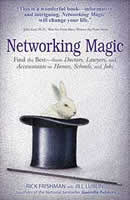 (Prerequisite: Marketing 201: Networking Goals)
(Prerequisite: Marketing 201: Networking Goals)
You now know your goal for attending an event. If you’re naturally outgoing, then you’re well on your way. But what if you’re shy? Nervous? Insecure? Not a “people-person”?
I never considered myself good at social events until I realized that socializing is a skill that can be authentically learned. You don’t have to fake a personality to succeed, and in fact the only way you can get good at socializing is to develop your strengths. There are some people who are naturally magnetic. If you don’t know your social strengths, ask your friends for their honest evaluation.
Here are some of my networking skill tips:
1. Count Quality, Not Quantity. Some people I know go to events to collect other people’s business cards. They judge their success by how thick their card stack is. How often have you had someone come up to you, hand you their card and say, “Use my services!”, then they repeat this with everyone they see? Rather than playing the “numbers game”, spend time getting to know people in-depth.
2. Be More Interested In Them. People love talking about themselves. Ask people what they do. Why do they do this job? What’s in it for them? Where’s their passion for their job? I personally love hearing about people’s passion – whatever it is.
3. Avoid The Common Questions. “What do you do?” is the common first question people www. People need to get their elevator speech off their chest. Let them. Pay attention. Then ask a question that you ARE interested in. Why? How long? What did you do before?
4. Talk in Specifics. Don’t talk about the weather.
5. Reveal Something About Yourself. You build trust by sharing something about yourself.
6. Find Commonality. If nothing else, you’re both at the same event. Why? Anything you both witnessed?
7. Thank You. A single interaction doesn’t build relationship. Send a “nice meeting you” email. Even better, a hand-written note.
8. Reconnect. When you see someone you met before (even if you don’t remember their name), say, “Hi”. People like to be recognized.
9. Remember Why Are People At The Event. People go to networking events to network. That means that you can potentially go up to anyone at an event and say, “Hi”. Introduce yourself.
10. Look For Other People Not Talking To Anyone. Inserting yourself in someone else’s conversation can be awkward. People are often relieved to have someone talk to them.
11. It’s Networking, Not Dating. Don’t take it personally.
12. It’s Networking, Not Dating. Keep your goals professional. If you’re at an event to get a date, it’ll confuse the person you’re talking with. Are you interested in them or their business?
13. Dress Nicer Than You Normally Do. You’ll feel better about yourself. When you feel better, it’s easier to be friendly.
14. Play The Host. Even if it’s the first time at this sort of event, welcome people. Look them in the eye. Ask them how you can they help. Pass along some tip (the bathrooms are around the corner). Introduce people to each other.
15. Help The Host. Introduce yourself to the host. Tell them why you’re at the event, tell them that who you’d like to meet and why. By being open to introductions, you make the host’s job easier.
15. Pay Attention To Your Energy. You don’t have to be networking all the time. Allow yourself some quiet time. Look around the room. Grab something (small) to eat.
16. Be Careful About Alcohol. You only get one chance to make a first impression. Alcohol may cloud your professional judgment or cause your tongue to slip.
17. Make Eye Contact. Make sure to give the person you’re talking with your complete attention. Besides being polite, it’ll relax the both of you – since they know you’re “there”.
18. Smile. Happy looking people are more approachable.
19. Don’t Take It Personally. Social events can be stressful. Some events are better for you than others.
20. Practice. Think of networking like dating. When you first started dating, you might have been quite awkward. Instead of trying to make the event be a huge success for you, simply try to improve your technique.
The key thing is to be authentic. People can spot fakes easily. Find (or develop) some social skills and get really good at them. You might even find yourself looking forward to attending more networking events.
How do you keep track of your network? One free software solution is Highrise.
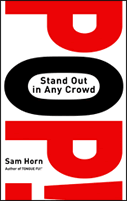 In her latest book, Sam Horn’s describes some great creative business marketing wordplay techniques for getting your product or service to be noticed and stand out from the crowd. Her book is focused on creating a less than 60 second “opening” that will start a dialogue with prospective customers.
In her latest book, Sam Horn’s describes some great creative business marketing wordplay techniques for getting your product or service to be noticed and stand out from the crowd. Her book is focused on creating a less than 60 second “opening” that will start a dialogue with prospective customers.


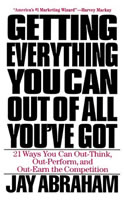
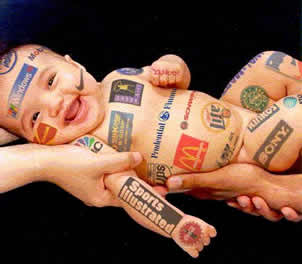




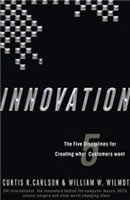
 When I meet a professional for the first time, I want to know if they practice what they preach. It’s too easy to tell others to do something. I’m looking for a disconnect between someone’s image and actions.
When I meet a professional for the first time, I want to know if they practice what they preach. It’s too easy to tell others to do something. I’m looking for a disconnect between someone’s image and actions.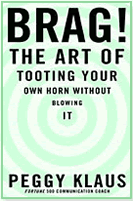
 (Prerequisite:
(Prerequisite: 